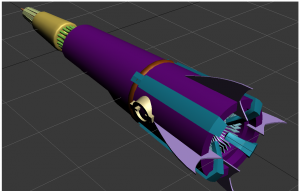 Some of us on the ¿Plástico? ¡Fantástico! team have never really touched a 3D modeling program before (cough….Dani….cough) so we´ve been looking into different digital modeling techniques to get an idea of what is intuitive and what´s not. Some people, who are more familiar with digital modeling, have gotten used to the interface and how to manipulate an object on a computer screen, but the learning curve is pretty steep. Since one of our project goals is to create something that would attract new audiences to the world of 3D printing, we wanted to do some testing with a naive user. How does a person who is unfamiliar with digital modeling interact with the interface? What do they expect to happen?
Some of us on the ¿Plástico? ¡Fantástico! team have never really touched a 3D modeling program before (cough….Dani….cough) so we´ve been looking into different digital modeling techniques to get an idea of what is intuitive and what´s not. Some people, who are more familiar with digital modeling, have gotten used to the interface and how to manipulate an object on a computer screen, but the learning curve is pretty steep. Since one of our project goals is to create something that would attract new audiences to the world of 3D printing, we wanted to do some testing with a naive user. How does a person who is unfamiliar with digital modeling interact with the interface? What do they expect to happen?
The image above is the beginning of a spaceship that I (Dani) have been modeling in 3ds Max, using the ever so helpful Digital Tutors tutorials. One of the things I had more trouble with is a good sense of depth. Sometimes in the digital realm it is difficult to tell where an object is being placed in relation to another object. Another challenge was creating internal parts to a 3D model– how deep does this hole go? Is the lip of the engine angled or warped? There were several times when I wanted to mold the spaceship out of clay or playdough, to control some of the finer details.
One of the great things about the 3D printer is that it allows you to touch the object that was at one point only digital. You can feel indentations and how pieces attach to each other. As someone that is new to digital modeling, being able to see and touch an object is not only a great step in not only the learning, but also in the general creation process. With the help of 3D printers, I can print out my object during different phases of the design process to get a better idea of what it looks like and how it is put together.
Coming soon: 3D printed spaceship!